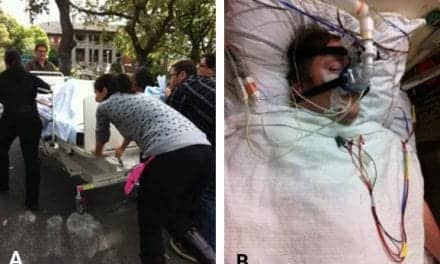Researchers make strides in scaling obstructive sleep apnea endotyping, which may guide therapy choices once more data becomes available.
By Lisa Spear
The pathophysiology behind every patient’s obstructive sleep apnea (OSA) is unique. Not every airway collapses in the same way or for the same reasons, but often OSA cases are treated and studied without considering the specificities of each person’s anatomy.
In the research community, there’s been a decent amount of interest in OSA phenotyping to hone in on the causes of sleep apnea. Now, an emerging computer program could change the way sleep scientists think about the study of sleep-disordered breathing by making endophenotyping easier to deploy on a large scale. The new tool called PUPpy uses algorithms to analyze large data sets from polysomnograms (PSG) to derive respiratory endotypes, according to recently published research in the journal SLEEP.
“With the respiratory endotyping that we have been working on, our goal is to help doctors answer why different patients have sleep apnea as opposed to whether or not they have it. That is not currently available information that is shown on a sleep study report,” says coauthor Scott Sands, PhD, assistant professor of medicine at Harvard Medical School.
Authored by a team of researchers from Harvard Medical School and the Iceland-based medical device company Nox Medical, the study confirmed the integrity of the PUPpy program.
The PUPpy progam builds on Sands’ previous work on a computational program he developed called endo-Phenotyping Using Polysomnography (PUP). In the latest research, he reprogrammed PUP in the programming language Python and created a cloud-based version. The researchers anticipate this technology will make endophenotyping more widely accessible to other sleep scientists.
“Since PUPpy can be easily employed on sleep studies from the Nox devices, we envision we can make endotyping available to a much larger audience than it currently is,” said Jon Agustsson, PhD, director of analysis, data and research at Nox Research, and Eysteinn Finnsson, research engineer at Nox Research, in a joint statement.
“We plan to start slowly, applying it in research projects where we are directly involved and can see how the algorithm performs on new data. When more evidence is created and the method is validated on more and more data, we envision making it available to more users and opening the floodgates.”
While the program is not yet designed for clinical settings, says Sands, research insights derived from this new technology could inform clinical decisions that lead to better precision medicine.
The program uses algorithms to detect breaths, calculate normalized ventilation, and measure respiratory drive. The program, for instance, may be able to detect when a patient has a more collapsible airway or if someone has less responsive upper airway muscle reflexes, says Sands, associate physiologist in the Division of Sleep and Circadian Disorders at Department of Medicine, Brigham and Women’s Hospital in Boston.
OSA endotyping, the scientists anticipate, will not replace the commonly used apnea hypopnea index (AHI) but will complement it. In the future, OSA endotyping could help determine the cause of sleep apnea in each patient and guide different treatment options.
“We hope that endotyping will be useful to further improve patient care. As a medical device company we are committed to bring out the best diagnostic technology and make it available for scientists and clinicians to discover how they can be best applied in improving patient care,” said Agustsson and Finnsson.
Lisa Spear is associate editor of Sleep Review.





